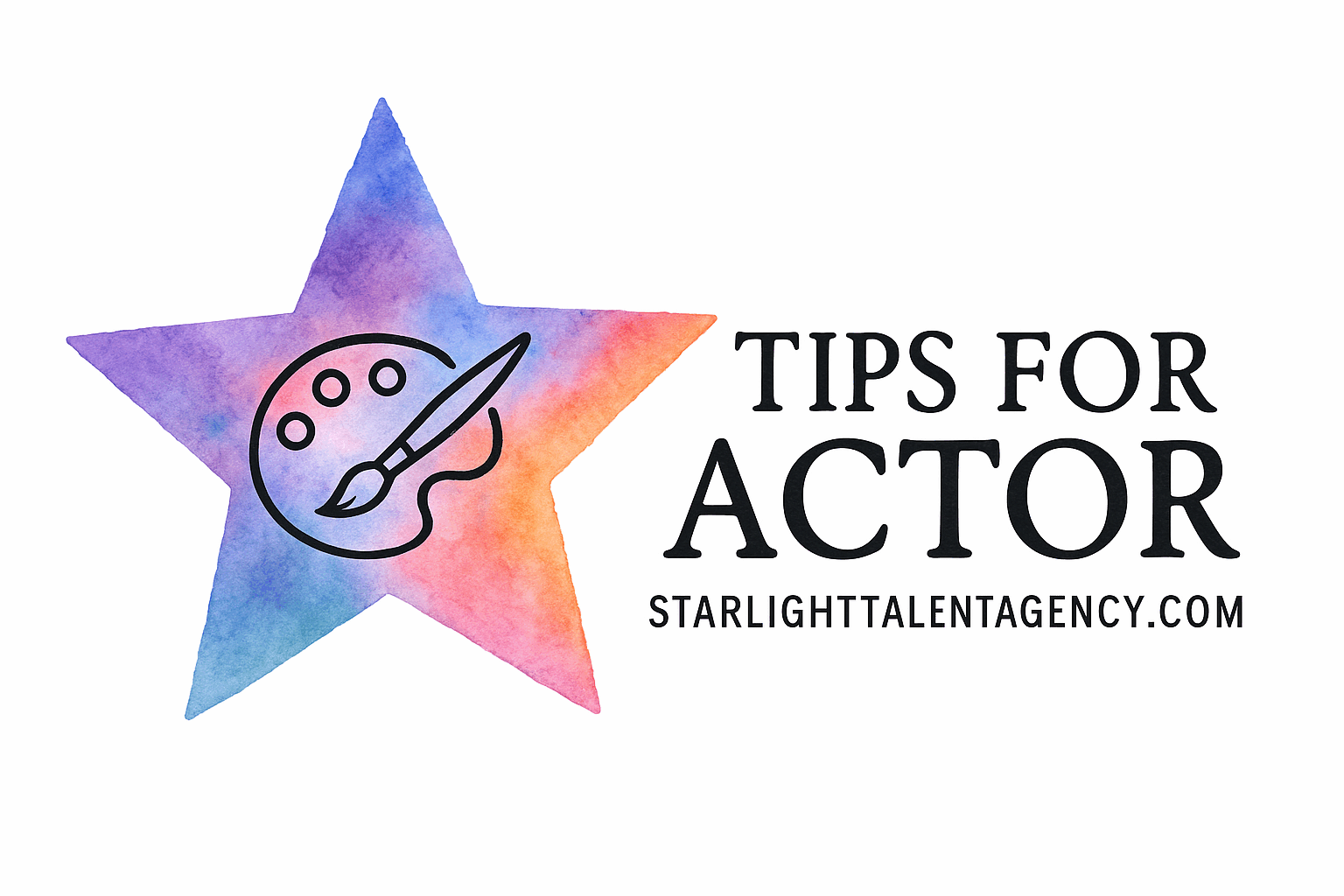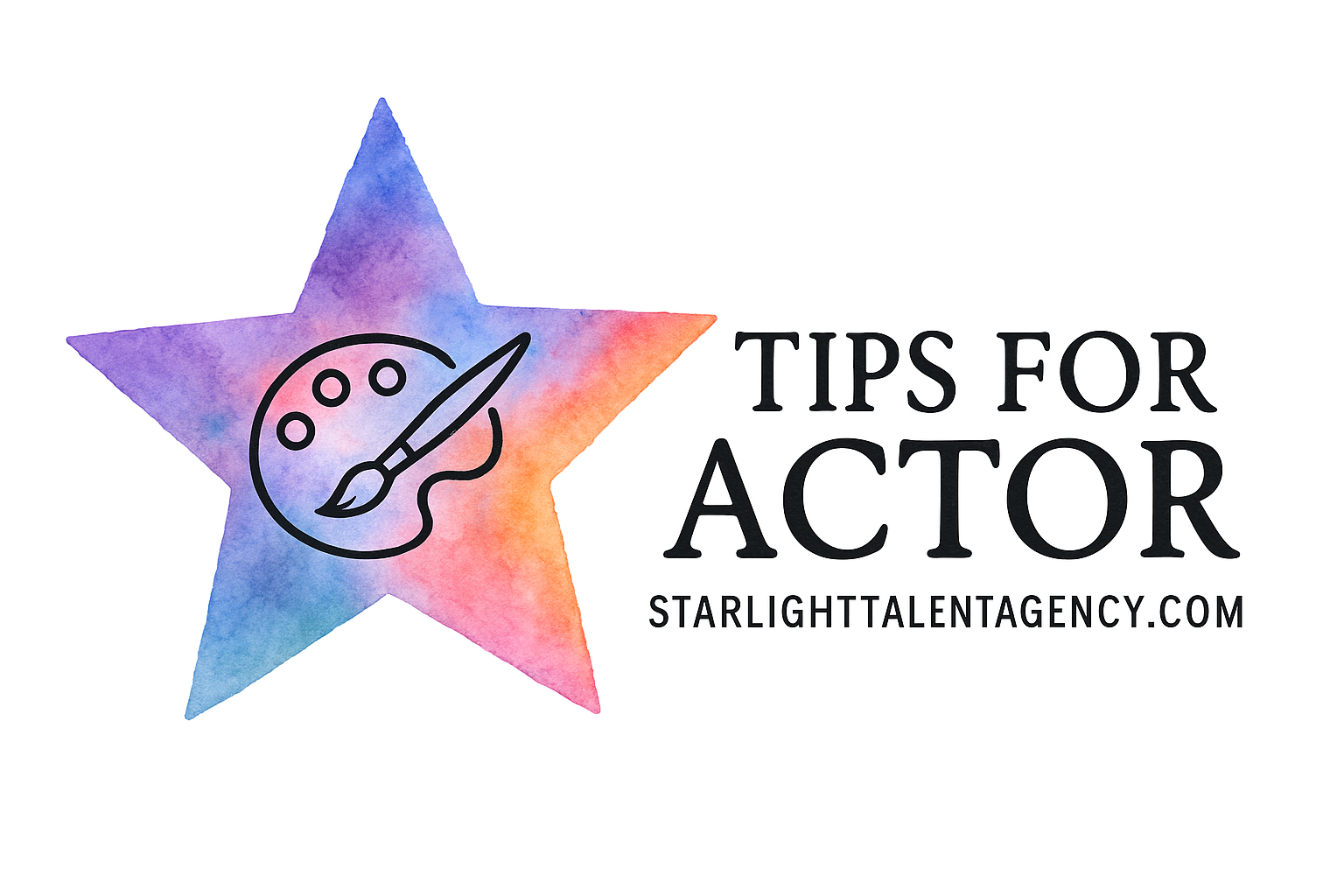Introduction: Why Camera Angles Can Make or Break Your Self-Tape
Every actor knows that a great self-tape can open doors — but few realize that camera angles are often the deciding factor between a callback and a pass. The way you position your camera shapes how casting directors perceive your performance, confidence, and presence.
At Starlight Talent Agency, we’ve seen talented actors elevate their careers simply by learning how to frame themselves effectively. Let’s explore eight expert coaching tips that will help you master actor camera angles in self-tapes and create audition videos that shine.
Understanding the Power of Camera Angles
What Are Camera Angles in Acting?
In acting, camera angles describe the position and height of your recording device relative to your body and face. Each angle changes how the audience experiences your performance. A low angle can make you appear powerful, while a high angle can emphasize vulnerability.
Understanding these subtle differences is crucial for strong on-camera acting — your lens becomes part of your storytelling.
Why Camera Angles Matter for Self-Tapes
Your self-tape is often your first impression. Poor framing, awkward angles, or bad lighting can distract from even the best performance. Effective audition preparation means taking control of the technical side, ensuring your craft translates powerfully through the screen.
Tip 1: Master the Eye-Line for Natural Connection
How to Find the Right Eye-Line
The eye-line — where you look while performing — is your invisible partner. For dialogue scenes, position your gaze just off the lens to simulate a natural exchange. You can place a small sticker or marker near the camera edge to maintain consistent focus.
This aligns beautifully with acting with partners training, which teaches you to connect authentically even without another actor present.
Common Eye-Line Mistakes Actors Make
Actors often either look straight into the camera (which feels confrontational) or too far away (which feels disconnected). Find a sweet spot — about an inch beside the lens — to make your performance feel alive and intimate.
Tip 2: Keep the Camera at Eye Level for Realism
The Psychology Behind Eye-Level Shots
An eye-level camera shot feels grounded and genuine. It mirrors how we naturally interact with others, helping casting directors feel emotionally in sync with your performance.
As discussed in Advanced Audition Skills, this approach enhances realism and reduces subconscious visual tension.
When to Break the Rule
Sometimes, rules are meant to be broken. If your character holds authority, try a slightly low angle to create power. For moments of vulnerability, a higher angle can help. Always make it a conscious creative choice rather than an accident.
Tip 3: Frame Yourself Like a Pro
The Perfect Medium Shot Explained
A medium shot (from mid-chest to just above the head) is ideal for most self-tape auditions. It provides enough room to capture gestures while keeping focus on facial expression.
This balanced composition mirrors how directors visualize performances on set — allowing your acting to feel screen-ready.

Headroom and Background Balance
Leave about two inches of space above your head in the frame. Avoid cluttered or busy backgrounds. A neutral wall, curtain, or backdrop works best — the simpler, the better. Your background shouldn’t compete with your performance.
Tip 4: Use Angles to Highlight Emotion
Close-Ups for Intensity
A close-up captures subtle emotional shifts — trembling lips, watery eyes, micro-expressions. Use this shot for highly emotional scenes where your eyes tell the story.
Pair it with techniques from expressive acting to make your emotions translate clearly through the camera.
Wide Shots for Movement and Energy
For physical or action-based moments, switch to a wider frame. This showcases your body language, spatial awareness, and energy. It’s particularly useful for scene work or when your movement supports the emotion.
Tip 5: Avoid Distracting Camera Movements
The Stability Rule for Self-Tapes
A shaking camera screams amateur. Use a tripod — always. Stable framing keeps your performance front and center, not your equipment.
Actors serious about audition preparation basics should invest in an adjustable tripod and test framing before every take.
Tripod Setup Tips
Position the camera at your eye level, about 3–5 feet away. Double-check your framing before pressing record. For smaller spaces, ring-light tripods offer both stability and lighting in one.
Tip 6: Experiment with Depth and Perspective
Using Foreground and Background Effectively
Stand about 3–4 feet from your backdrop. This separation prevents harsh shadows and adds visual depth. A slight blur behind you makes the image feel cinematic.
For advanced training on physicality and depth, explore role physicality techniques — they help you use space as part of your storytelling.
Layering Your Performance Visually
Use subtle forward movements to emphasize emotional shifts or retreat slightly for introspective beats. This dynamic use of space creates a visual rhythm and engages viewers more deeply.
Tip 7: Lighting and Angles Go Hand in Hand
How Light Affects Your Camera Angles
Even the perfect angle fails with poor lighting. Always face your primary light source — whether it’s a window or soft LED light. Avoid overhead lighting that casts unwanted shadows.
If you’re unsure how to find your best setup, check out self-tape setup guides for professional home lighting strategies.
Quick DIY Lighting Setup
Position two lamps at 45° angles from your face to soften shadows. Add a small backlight if possible to create separation from the background. A ring light adds flattering highlights to your eyes.
Tip 8: Review and Adjust Every Take
Watch Like a Casting Director
After recording, review your footage critically. Watch it as if you were the one making the casting decision. Does the angle help tell the story? Does it feel visually engaging?
This process mirrors the self-evaluation exercises taught in career growth coaching — analyzing your work to continuously refine your craft.
Self-Assessment Checklist
Before submitting your tape, confirm:
- Is your framing consistent?
- Are your eyes clearly visible?
- Is your performance natural and expressive?
- Does lighting complement your camera angle?
- Is your audio clear and balanced?
Common Mistakes to Avoid with Camera Angles
Overacting to Compensate for Poor Angles
If your angle doesn’t capture subtle expressions, you might be tempted to overact. Don’t. Fix your setup instead. A good frame should do half the storytelling work for you.
Ignoring Background and Framing
Busy rooms, distracting posters, or visible furniture break the illusion of professionalism. Create a designated acting space — clean, neutral, and well-lit.
Final Thoughts: Turn Your Self-Tape into a Casting Magnet
Mastering actor camera angles in self-tapes isn’t just about looking good; it’s about creating a believable on-screen presence. Each angle tells part of your story, supporting your emotional choices and highlighting your strengths.
Remember, your self-tape is your audition stage — and every technical detail is a brushstroke on your professional canvas.
Conclusion
A brilliant performance deserves to be seen clearly. By applying these eight camera angle coaching tips, you’ll bring depth, clarity, and confidence to every self-tape you record. Combine this with strong acting confidence and thoughtful character development, and your next audition could be your breakthrough moment.
FAQs
1. What’s the ideal shot for self-tapes?
A medium shot at eye level is the standard — it’s clear, flattering, and emotionally engaging.
2. Should I ever break eye contact with the camera?
Only when the script demands it. For most self-tapes, keep your gaze just off-camera to feel authentic.
3. Can I use natural light instead of studio lights?
Yes! Just make sure you’re facing the light source. Soft, diffused window light is perfect.
4. Do casting directors care about camera quality?
They care more about clarity and framing than gear. Even smartphones work if used correctly.
5. Should I use props or backgrounds in my self-tape?
Keep it minimal. The focus should remain on you and your performance.
6. How do I make my self-tape stand out visually?
Use depth, clean framing, and subtle movement. Combine it with solid acting choices and confident delivery.
7. Where can I learn more about improving my self-tapes?
Visit Starlight Talent Agency’s Self-Tape Mastery guide for advanced strategies and video examples.

